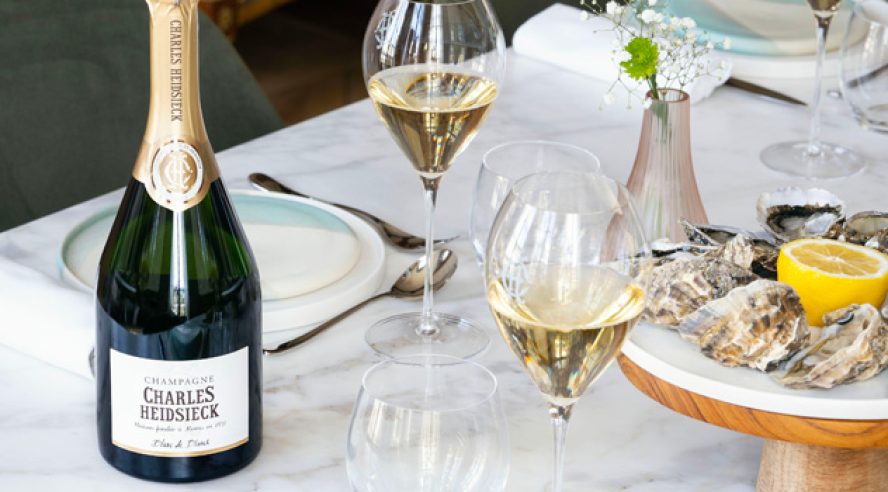
Champagne is often associated with celebration and luxury. Yet its versatility goes well beyond toasts. It’s a remarkable companion to food, particularly the rich and varied dishes of French cuisine. Pairing champagne with classic French dishes involves understanding the interplay of flavors, textures, and aromas. This guide explores how to create harmonious combinations that enhance both the wine and the meal, offering insights into specific dishes and practical tips for selecting the right bottle.
Successful wine pairing with the classic French cuisine hinges on balance. Champagne’s effervescence, acidity, and range of flavors—from crisp and citrusy to rich and toasty—make it a dynamic food partner.
The goal is to ensure neither the dish nor the wine overwhelms the other. Instead, they should complement or contrast in a way that elevates the dining experience.
Acidity in champagne cuts through rich, fatty foods, while its bubbles cleanse the palate between bites. Meanwhile, the wine’s subtle sweetness or nutty undertones can mirror or enhance the flavors in a dish.
Make sure to consider the primary components of the dish—its richness, preparation method, and dominant flavors—when choosing a style of champagne.
Certain French dishes have a natural affinity with champagne, thanks to their complementary textures and flavors. Here are some timeless examples :
Fresh oysters, often served raw with a squeeze of lemon or a light mignonette, are a classic match for champagne. The wine’s high acidity and minerality echo the briny, oceanic notes of the oysters, while the bubbles provide a refreshing contrast to their silky texture.
A Brut Nature, Zéro Dosage or Non Dosé champagne is an excellent choice because this type of champagne, to which no sugar has been added, ideally reveals the iodized flavors of seafood without overloading them.
Foie gras, often considered the epitome of French luxury cuisine, is rich, buttery, and decadent. Pairing this dish with champagne requires a wine with body and richness to match its intense flavors. A Demi-Sec or Doux champagne, which has a slightly higher sugar content, complements foie gras’s richness while contrasting its savory, fatty texture.
This creamy veal stew, made with a velouté sauce and often garnished with mushrooms and pearl onions, pairs beautifully with a Blanc de Blancs champagne. Made entirely from Chardonnay grapes, this style offers a creamy texture and bright acidity that harmonize with the dish’s richness while balancing its subtle flavors.
For dessert, Tarte Tatin, a caramelized apple tart, offers a perfect opportunity to pair champagne with something sweet. A Demi-Sec champagne, with its hints of sweetness, complements the caramelized apples and the buttery pastry, creating a delicious balance of flavors. The bubbles help cleanse the palate between bites, making this pairing both indulgent and refreshing.
Seared scallops, often prepared with butter and herbs, pair elegantly with champagne. The richness of the scallops requires a champagne with enough body to match, such as a vintage, a Brut champagne or a Blanc de Blancs. The champagne’s effervescence lifts the dish’s flavors, while its acidity provides a counterpoint to the buttery richness of the scallops.
Snails cooked in garlic butter, a Burgundian specialty, are earthy and rich. A vintage champagne with some age to complement the dish’s depth. The wine’s bubbles and acidity refresh the palate, balancing the intensity of the garlic and butter.
French goat cheeses like Chèvre are known for their tangy, earthy flavors. A Brut champagne, with its crisp acidity and subtle minerality, pairs wonderfully with the complexity of the goat cheese. The bubbles of the champagne help to cleanse the palate between bites, while the wine’s bright flavors complement the tanginess of the cheese.
Champagne ranges from bone dry (Brut Nature) to sweet (Demi-Sec and Doux). Brut is the most common style. It works with various dishes due to its balanced dryness. For richer or slightly sweet foods, like foie gras or Tarte Tatin, a Sec or Demi-Sec offers a harmonious match. Understanding this balance is key to creating a harmonious pairing.
The body of champagne refers to its weight and texture. It can vary from light and crisp to rich and full. Light-bodied champagnes, like those made from Chardonnay (Blanc de Blancs), work well with delicate dishes such as oysters or scallops. Richer champagnes, such as those made from Pinot Noir or Pinot Meunier, complement heavier dishes like Blanquette de Veau or Escargots.
Younger champagnes tend to be fresh and fruity, with a more pronounced effervescence. Aged or vintage champagnes develop complex flavors (brioche, nuts, or honey) and a smoother texture. Pair younger champagnes with lighter dishes and older champagnes with richer, more complex foods.
Citrusy champagnes enhance seafood, while toasty, nutty ones elevate buttery or earthy dishes. Matching intensity is key. A subtle dish needs a subtle wine, while a bold one can handle a more robust champagne.
Beyond the basics, a few practical tips can refine the pairing process:
Pairing champagne with classic French dishes is an art rooted in balance and curiosity. From the briny simplicity of oysters to the indulgent richness of foie gras, each dish offers an opportunity to explore champagne’s range. Once you understand the sweetness levels, body, age, and flavor profiles, you can craft pairings that elevate a meal into a memorable experience.
Article produced in partnership with Eating Europe.
Brut Champagne, Brut Nature, Blanc de Blancs, Rosé, or Vintage? > Discover all the types of champagne
Our approach guarantees quality, simple ordering, secure payment and careful delivery within 5 to 10 days in Europe.
Since 2010, our carefully selected wines have come from the most prestigious Champagne Houses.
Our Champagne experts will advise you on the success of your private and professional projects.
Chic boxes, personalization, attentions... the pleasure is as much to offer as to receive.
Copyright 2022 © all rights reserved. Champmarket.


ALCOHOL ABUSE IS DANGEROUS FOR YOUR HEALTH. DRINK RESPONSIBLY.